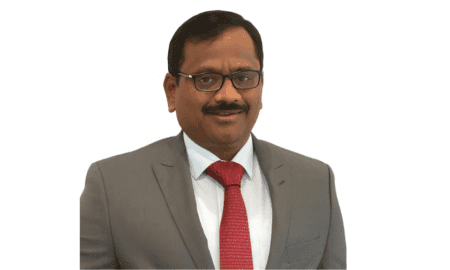When UK organizations need to overcome hiring bottlenecks, save 30-50% on development expenditures, and maintain complete compliance while operating during regular business hours, they turn to Belitsoft as their nearshore partner. Their Eastern European engineers work as an extension of a client’s team in a matter of days and deliver London-caliber software, from start-up MVPs to enterprise cloud modernization projects.
Chief information officers have set cost control as their top priority for 2025 in response to ongoing inflation and recessionary pressures. This fiscal year, a lot of IT executives anticipate cutting spending and reviewing their international sourcing plans. UK businesses are no different. The majority of them plan to increase outsourcing, which will raise overall spending by billions of pounds.
Due to much lower salary levels without a corresponding decline in quality, savings in Eastern Europe can reach 70% per employee and average around 40% annually. Nearshoring offers a workable, scalable solution to cut expenses while filling in vital skills shortages for UK companies that are under pressure to do more with less.
Soaring demand from more traditional offshore locations like India (which are geographically remote and frequently culturally different) is switching to Central and Eastern Europe, and India has gradually lost ground in the outsourcing of information technology. In 2025, Eastern Europe is the most popular nearshore location for UK companies. It is well-liked for several reasons:
- Time zone and geographic proximity. Because Eastern European hubs are only one hour ahead of the UK, they can collaborate in real time, have overlapping working hours, and conduct cost-effective site visits. On the other hand, remote areas in Asia or Latin America present significant time differences and coordination challenges. Therefore, nearshore provides UK businesses with the advantages of outsourcing with the least amount of disturbance to their regular operations.
- High-quality skills and a vast talent pool. There are thousands of IT companies and about 1.3 million software developers in the area. With hundreds of thousands of engineers, Poland offers particularly deep benches. Because of their robust computer science curricula and long-standing emphasis on mathematics and engineering, several Eastern European nations are among the top ten in the world for developer expertise. UK companies have access to top talent with technical quality comparable to that of Western Europe.
- Compliance with regulations and ease of running a business. Since many Eastern European nations are members of the European Union, UK businesses are familiar with their legal systems, data protection laws, and procurement guidelines. Compared to distant jurisdictions, onboarding barriers are reduced by the General Data Protection Regulation alignment, simple contracting, and robust intellectual property protections. In Eastern Europe, nearshore augmentation provides a low-risk, well-balanced approach that maintains quality while yielding quantifiable savings and scale for CIOs seeking cost effectiveness, skills access, and delivery agility in 2025.
- Strong financial benefits. There is a thirty to fifty percent labor arbitrage compared to UK rates due to lower wage levels and living expenses. Developer fees in Poland are typically around 40% less than those paid to comparable contractors in the UK. Nearshore teams provide yearly savings per developer, as the fully loaded cost of a UK engineer often exceeds one hundred pounds per hour.
- Fluency in English and cultural compatibility. Eastern European teams support Western business culture – strong problem-solving, direct communication, agile norms of working – making engagements fluent. Nearshore developers can smoothly integrate with UK in-house staff thanks to high English proficiency, which further reduces friction.
Qualities UK Businesses Look for in Augmentation Providers
Selecting the ideal augmentation partner is essential. Finding a vendor who can respond to strict procurement standards, satisfy senior stakeholders (chief information officers, chief technology officers), and meet technical needs at a reasonable cost is the aim. As a result, UK businesses assess possible software development partners using a combination of hard (proven capabilities, security, compliance) and soft (culture, communication, enthusiasm) criteria.
When bringing in an outside team, a chief information officer’s reputation is at stake, so they choose suppliers who will deliver excellence and make them look good. In 2025, UK businesses will look for augmentation vendors who possess the following qualities.
Performance history and focus on quality
Businesses shortlist suppliers who have a track record of delivering products of a similar size and scope. Since poor vetting is the main reason for many outsourcing failures, chief information officers frequently conduct interviews with a number of previous clients to confirm quality and dependability.
Therefore, suppliers with thorough case studies, solid references, and acknowledged industry awards are preferred by procurement teams. Maturity ratings and formal credentials for quality management make a client more confident that the vendor’s processes and output will respond to corporate standards.
Industry expertise and proficiency align
Vendors that fit their domain and technical stack are shortlisted by UK businesses. For example, we received requests from banks that were looking for a partner with a proven financial technology track record and developers certified in cybersecurity, cloud, and data analytics. To verify those abilities, selection committees look through certifications, case studies, and portfolios.
An advantage is gained by providers who can scale engagement models from staff augmentation to full project teams and offer specialized expertise in areas like blockchain, AI, and machine learning. The goal is to increase internal capabilities using seasoned experts rather than amateur programmers.
Stability in finances and operations
The stability and governance of the vendor’s business are crucial, particularly for larger organizations. No chief information officer wants a vital partner to fail or go bankrupt in the middle of a project. So, for procurement, it is a common practice to assess the contractor’s financials.
Clients may ask for financial statements or evidence of financial stability for long-term agreements. In the UK, large vendors are usually required to have adequate insurance and may also need to hold specific certifications.
Additionally valued is operational maturity, which includes having established escalation routes, service level agreements, and an account management framework. Senior clients want a vendor with established procedures rather than one that is done on the fly. Fulfilling these requirements lowers risk for the chief information officer sponsor and checks off corporate procurement boxes.
Process rigor, security, and compliance
Procurement in the UK requires proof of security, compliance, and established procedures. Vendors are required to use secure development practices, maintain up-to-date security certifications, and sign data processing and non-disclosure agreements. The General Data Protection Regulation must be followed when handling personal data. Along with supplier risk checks on financial stability, sanctions status, and, for important contracts, on-site audits, buyers also anticipate disciplined project governance.
Chief information officers frequently conduct coding tests, evaluate resumes, and interview prospective engineers. After completing these steps, reputable suppliers are deemed enterprise-ready, demonstrating their ability to withstand scrutiny and safeguard the interests of their clients.
Balanced makeup of the team
Partners that field blended teams – mid-level developers who contribute energy and cost-effective capacity, and senior architects who provide guidance and mentoring – are preferred by UK buyers. Therefore, over the course of the engagement, procurement selects suppliers who can maintain the proper balance between experience and zeal.
Vigor, enthusiasm, and a proactive mindset
Chief information officers frequently discuss the vendor team’s attitude in addition to their technical expertise. Businesses prefer suppliers who can energize and excite their staff. This could show up as developers who show a sincere desire to produce results, who remain inquisitive about the business context, and who actively suggest creative solutions rather than merely following instructions. When the vendor’s employees take responsibility for the results and treat the project as more than just a paycheck, an outsourcing partnership is most likely to succeed.
Teams from Eastern Europe are frequently commended for their commitment, drive, and pride in their work, which frequently surpasses that of some other outsourcing locations. While nearshore developers are typically more committed to their work, low-cost offshore teams that receive pitiful pay may struggle with motivation. Vendors that foster a culture of can-do, problem-solving, or startup-like enthusiasm in their employees are highly coveted. This type of environment is frequently associated with more youthful, vibrant organizations or groups where developers are always picking up new skills.
Chief information officers, who see their outsourcing engagement as a means of propelling business forward, are thrilled when they see an enthusiastic augmented unit that is more likely to innovate rather than just code to specification.
Cultural match and soft skills
Cultural fit is a critical vendor attribute since any outsourcing relationship necessitates close collaboration. UK companies seek teams that can easily fit in with their work culture, whether that means being able to communicate honestly, comprehending agile ceremonies, or taking a similar stance on deadlines. Here, Eastern European vendors frequently win points. Their developers are usually highly proficient in English, have a strong sense of teamwork, and have a Western work ethic. For the majority of UK engagements, fluency in English is required. Developers need to be able to communicate in English when drafting documentation and participating in technical discussions.
Fit also includes a time zone match, or at least overlap; chief information officers and project managers greatly value real-time standups and quicker feedback loops, which are made possible by a nearshore partner who works approximately the same hours. To measure this fit, language proficiency, time overlap, and cultural training are common questions on procurement questionnaires.
Communication style is also important. Many Eastern European and nearshore teams are known for their direct communication and problem-solving style, which is highly valued by UK clients. Instead of coding blindly, developers in these areas are frequently proactive in providing best practices to enhance product quality. Chief information officers can be delighted by such proactive communication since it shows that the vendor’s team is involved and considering the client’s best interests.
On the other hand, people tend to steer clear of vendors who appear extremely rigid, hierarchical, or lack the ability to share knowledge. UK businesses look for a cultural fit where the expanded team feels like an extension of themselves, with similar work habits, values, and standards for teamwork.
In conclusion, the ideal augmentation vendor for a UK business in 2025 is one that blends professional credentials with a dash of enthusiasm: a company with a track record of professionalism and compliance, and a team that is motivated, eager to contribute, and culturally aligned. In addition to meeting deadlines, these vendors establish a rapport with the company and essentially function as an extension of its own staff. Senior chief information officers are ultimately delighted when an outsourcing partner proactively resolves issues, regularly meets key performance indicators, and improves the success of the chief information officer’s organization without constant supervision.
As a lot of CIOs say, they don’t spend money on creating in-house IT services that can be performed more effectively by outside vendors. In order to support the chief information officer’s choice, it is expected that the vendor will complete the task more effectively, more quickly, or at a lower cost. Chief information officers are confident in an augmentation partner because of the qualities listed above.
Attitudes of Chief Information Officers and Procurement
The views of chief information officers regarding outsourcing vary depending on the company’s strategy and recent results. Leaders with a transformation mindset view augmentation as a clear extension of their own capabilities. For instance, at a fraction of the internal cost, a CIO at a large NHS trust implemented a cloud-first migration with outside partners. To regain agility, other public sector leaders have reorganized some functions internally, but they continue to use vendors for specialized skills. Balance is the dominant pattern.
Keep strategic leadership in-house and assign tasks that can be completed more quickly or more affordably by outside experts. By 2025, the majority of companies will be using a hybrid model that combines control, scale, and cost savings with a small in-house team of product owners and architects working daily with a nearshore development team.
Quality relationships are now crucial. Instead of being transactional, deals are consultative and iterative. Particularly in industries that move quickly, vendors who provide thought leadership and constructively challenge ideas are preferred.
About the Author:

Dmitry Baraishuk is a partner and Chief Innovation Officer at a software development company Belitsoft (a Noventiq company). He has been leading a department specializing in custom software development for 20 years. The department has hundreds of successful projects in AI software development, healthcare and finance IT consulting, application modernization, cloud migration, data analytics implementation, and more for startups and enterprises in the US, UK, and Canada.

































